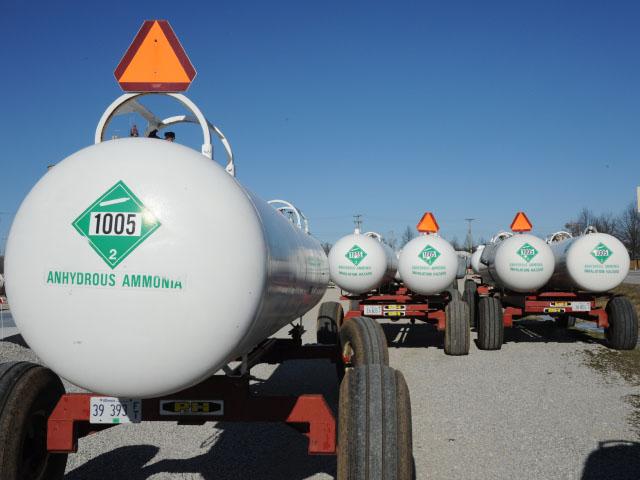
Summer heat puts corn on a fast track. Knowing when to take a closer look can help avoid yield roadblocks.

Summer heat puts corn on a fast track. Knowing when to take a closer look can help avoid yield roadblocks.

Entries are now being accepted for the 2025 National Sorghum Yield Contest, which features a new protocol for verifying yields.

As weather narrows planting windows, farmers must think about what gets planted first.

Last year's dry conditions at harvest are affecting some soybean seed germination rates. Here's how to account for it and ensure a desired final stand.

New center puts boots in the field for repeatable and economic solutions that make sense for farmers.

Review these anhydrous ammonia safety procedures before moving tanks and beginning applications this spring.

The 2025 Commodity Classic in Denver offered participants a look at new products and programs now available or coming soon. Here's a rundown on some developments of interest to corn and soybean farmers.
Here are two free tools that can help sort through management practices to protect crops from various pests.

Every snowflake has a silver lining -- and it just happens to be made from free nitrogen fertilizer.

Have a story to tell about what life on your farm is like? DTN's View From the Cab feature is looking for two farmer volunteers for the 2025 season.

Farmers enter this season without a post-emergence, over-the-top dicamba product registered for weed control in soybeans and cotton. What does it mean for the controversial chemistry? Here are some do's and don'ts.

Those who work outside may remember the soothing attributes of Corn Huskers Lotion and be surprised to learn it is still available after all these years.

Toy bin setups can replicate those from the home farm or represent the storage system you've always dreamed of, and they fit under the Christmas tree.

Glean kernels of knowledge from the National Wheat Yield Contest entries and plan your strategy to enter for 2025.

DTN/Progressive Farmer writers were asked to think back on their year and choose a favorite story they wrote. DTN Senior Crops Editor Pamela Smith selected a View From the Cab segment that talked about farming with Dad.

A free Herbicide Classification chart can help you select herbicides and rotate among effective herbicides to delay the development of herbicide resistance.

Matt Plitt, president and CEO of Valent U.S.A., gave DTN/Progressive Farmer an update on the latest happenings at the company headquartered in San Ramon, California.

Farmers have been advised to rotate their herbicide modes of action to help prevent the proliferation of resistant weeds, but is that the most effective tactic? The scientist-led GROW (Getting Rid of Weeds) network shares the latest research on the topic.

Our weekly feature called View From the Cab offers a more personal look at farming and farm life. Are you willing to volunteer to give your perspective?

In box retail chain stores across several states, decorative cornstalks infected with tar spot, a fungal disease, have been discovered. These decorations could potentially spread the yield-reducing pathogen to new areas.
DIM[2x3] LBL[blogs-production-list] SEL[[data-native-ad-target=articleList]] IDX[2] TMPL[news] T[]
DIM[2x3] LBL[blogs-production-list-2] SEL[[data-native-ad-target=articleList]] IDX[5] TMPL[news] T[]